The DnD Barbarian 5e class is a dedicated front-line melee fighter. When making a Barbarian you have the flexibility to choose between a damage dealer; a protective ‘tank’; or simply a wild killing machine – but you’ll always be in the thick of the action. This guide explains everything you need to know to create a Barbarian character, and how to get the most out of them when you’re playing.
If you’re looking for more general inspiration about which class to pick for your next character, check out our full DnD classes guide. We have a separate guide to DnD races, and the Barbarian subclasses 5e, when you’re ready to start building your character. And we can recommend some great DnD character sheets, and free online DnD character creator tools, to help speed the process up.
Here’s everything you need to know about the DnD Barbarian 5e class:
- Barbarian class features
- Rage 5e
- Unarmored Defense 5e
- Reckless Attack 5e
- Danger Sense 5e
- Primal Path
- Ability Score Improvement
- Extra Attack 5e
- Fast Movement 5e
- Feral Instinct 5e
- Brutal Critical 5e
- Relentless Rage 5e
- Persistent Rage 5e
- Indomitable Might 5e
- Primal Champion 5e
- Best Barbarian 5e stats
- Best Barbarian 5e races
- Best Barbarian 5e equipment
- Barbarian 5e subclasses
- Best Barbarian 5e builds
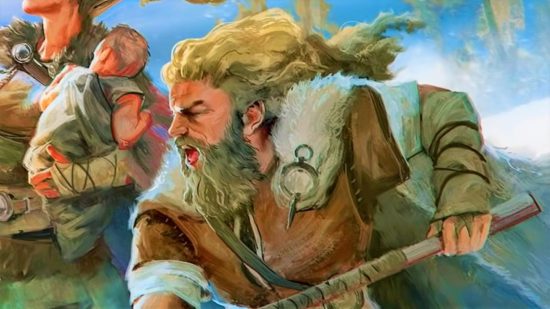
Barbarian class features
As a Barbarian, you gain the following class features:
Hit points
| Hit dice | 1d12 per Barbarian level |
| Hit points after first level | 12 + your Constitution modifier |
| Hit points at higher levels | 1d12 (or seven) + your Constitution modifier per Barbarian level after first |
Barbarian proficiencies
| Armor | Light armor, medium armor, shields |
| Weapons | Simple weapons, martial weapons |
| Tools | None |
| Saving throws | Strength, Constitution |
| Skills | Choose two from Animal Handling, Athletics, Intimidation, Nature, Perception, and Survival |
Equipment
You start with the following equipment, in addition to the equipment granted by your background:
- (a) a greataxe or (b) any martial melee weapon
- (a) two handaxes or (b) any simple weapon
- An explorer’s pack and four javelins
Class features table
| Level | Proficiency bonus | Features | Rages | Rage damage |
| 1 | +2 | Rage, Unarmored Defense | 2 | +2 |
| 2 | +2 | Reckless Attack, Danger Sense | 2 | +2 |
| 3 | +2 | Primal Path | 3 | +2 |
| 4 | +2 | Ability Score Improvement | 3 | +2 |
| 5 | +3 | Extra Attack, Fast Movement | 3 | +2 |
| 6 | +3 | Path feature | 4 | +2 |
| 7 | +3 | Feral Instinct | 4 | +2 |
| 8 | +3 | Ability Score Improvement | 4 | +2 |
| 9 | +4 | Brutal Critical (1 die) | 4 | +3 |
| 10 | +4 | Path feature | 4 | +3 |
| 11 | +4 | Relentless | 4 | +3 |
| 12 | +4 | Ability Score Improvement | 5 | +3 |
| 13 | +5 | Brutal Critical (2 dice) | 5 | +3 |
| 14 | +5 | Path feature | 5 | +3 |
| 15 | +5 | Persistent Rage | 5 | +3 |
| 16 | +5 | Ability Score Improvement | 5 | +4 |
| 17 | +6 | Brutal Critical (3 dice) | 6 | +4 |
| 18 | +6 | Indomitable Might | 6 | +4 |
| 19 | +6 | Ability Score Improvement | 6 | +4 |
| 20 | +6 | Primal Champion | Unlimited | +4 |
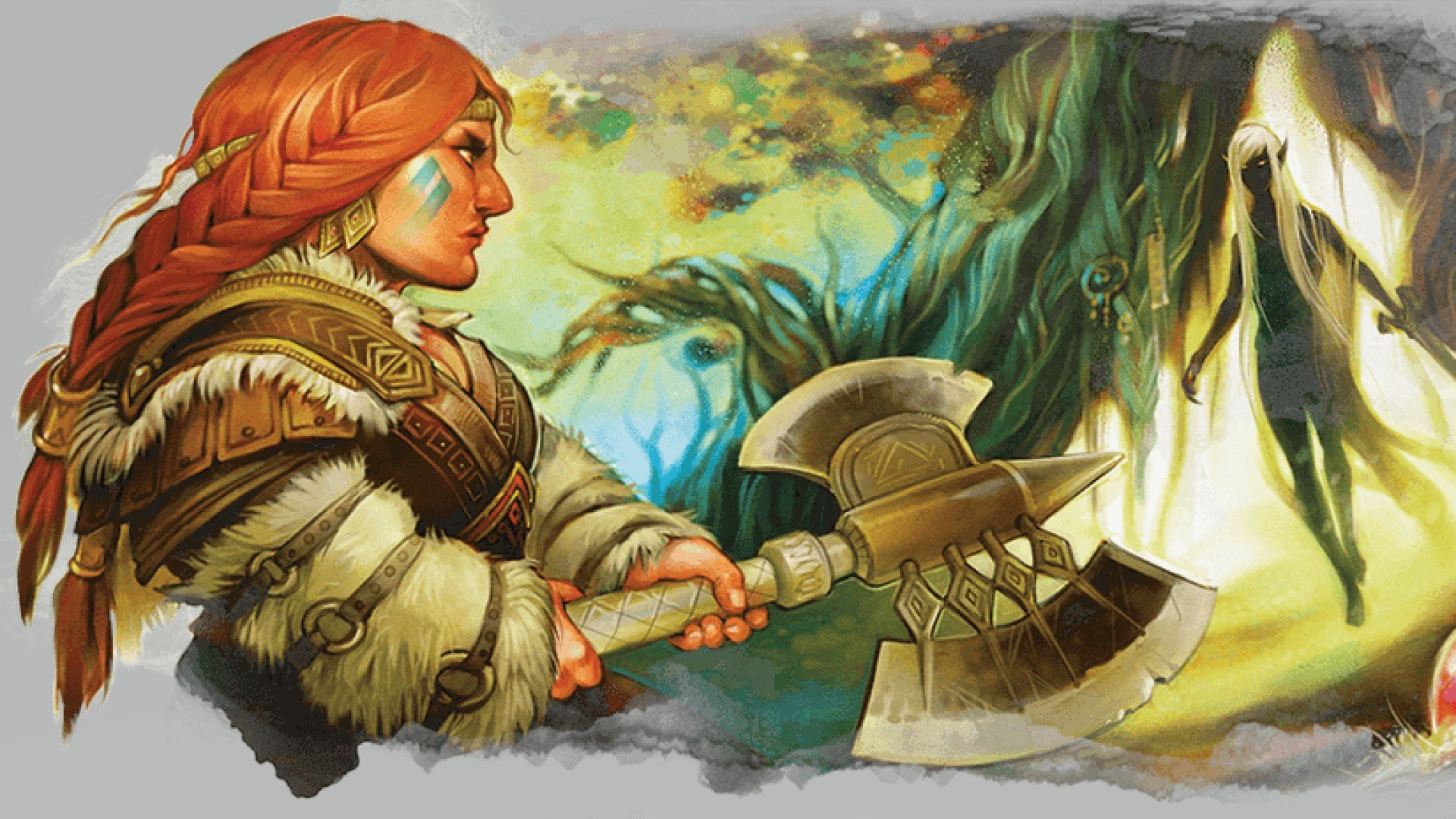
Rage 5e
In battle, you fight with primal ferocity. On your turn, you can enter a rage as a bonus action.
While raging, you gain the following benefits if you aren’t wearing heavy armor:
- You have advantage on Strength checks and Strength saving throws.
- When you make a melee weapon attack using Strength, you gain a bonus to the damage roll that increases as you gain levels as a Barbarian, as shown in the Rage Damage column of the Barbarian table.
- You have resistance to bludgeoning, piercing, and slashing damage.
If you are able to cast spells, you can’t cast them or concentrate on them while raging.
Your rage lasts for one minute. It ends early if you are knocked unconscious or if your turn ends and you haven’t attacked a hostile creature since your last turn or taken damage since then. You can also end your rage on your turn as a bonus action.
Once you have raged the number of times shown for your Barbarian level in the Rages column of the Barbarian table, you must finish a DnD long rest before you can rage again.
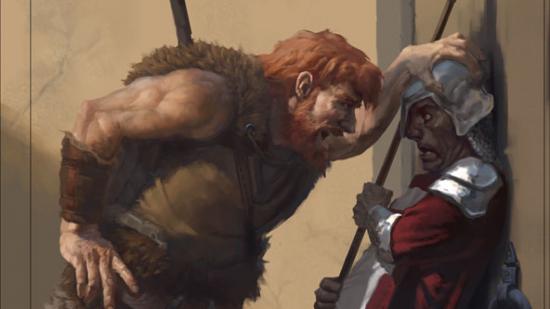
Unarmored Defense 5e
While you are not wearing any armor, your armor class equals 10 + your Dexterity modifier + your Constitution modifier. You can use a DnD shield and still gain this benefit.
Reckless Attack 5e
Starting at second level, you can throw aside all concern for defense to attack with fierce desperation. When you make your first attack on your turn, you can decide to attack recklessly. Doing so gives you advantage on melee weapon attack rolls using Strength during this turn, but attack rolls against you have advantage until your next turn.
Danger Sense 5e
At second level, you gain an uncanny sense of when things nearby aren’t as they should be, giving you an edge when you dodge away from danger.
You have advantage on Dexterity saving throws against effects that you can see, such as traps and spells. To gain this benefit, you can’t be blinded, deafened, or incapacitated 5e.
Primal Path
At third level, you choose a path that shapes the nature of your rage. Your choices grant you features at third level and again at sixth, 10th, and 14th levels. For more details on your DnD subclass options, see our ‘Barbarian subclasses’ section later on in this guide.
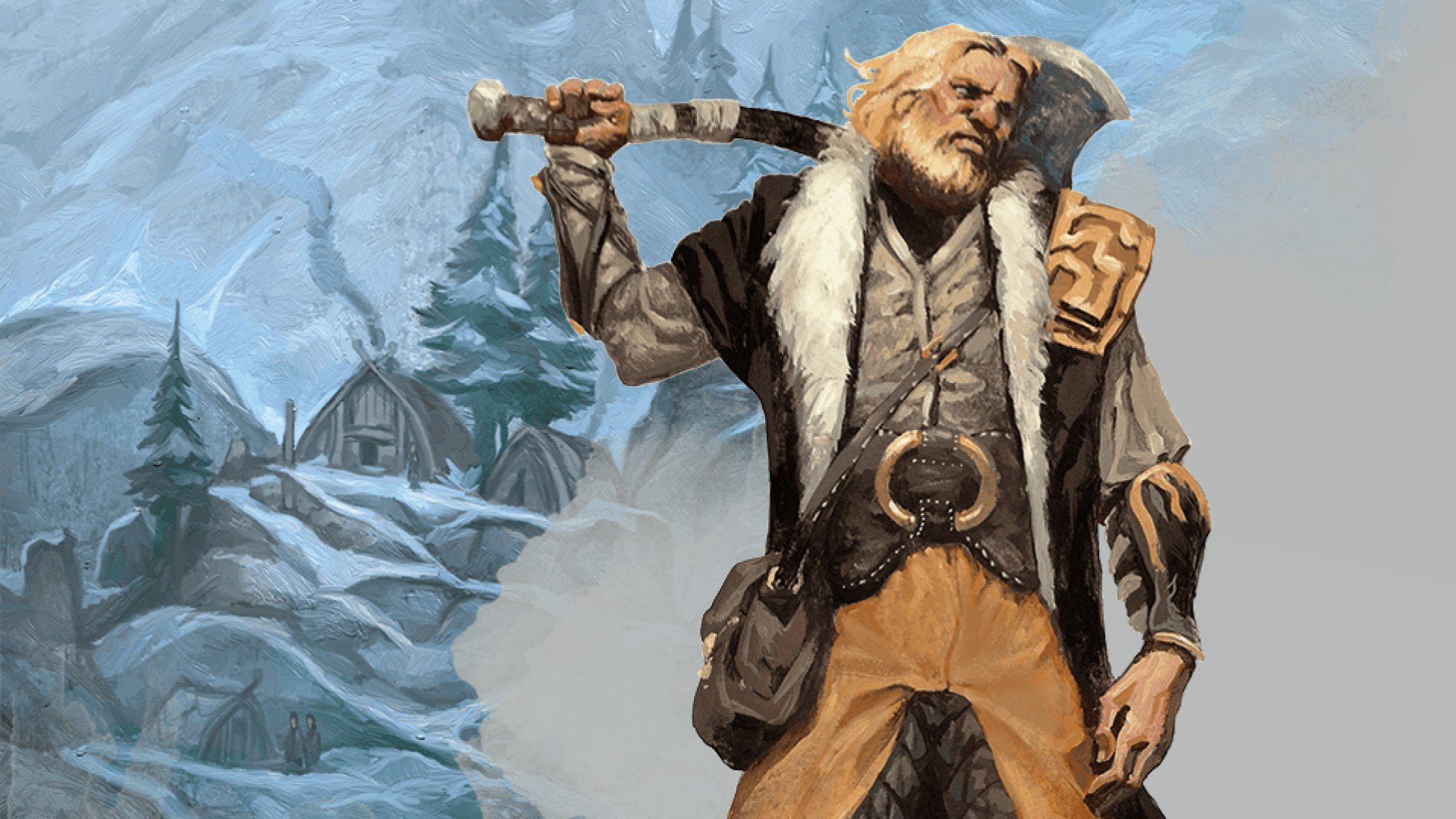
Ability Score Improvement
When you reach fourth level, and again at eighth, 12th, 16th, and 19th level, you can increase one ability score of your choice by two, or you can increase two ability scores of your choice by one.
Extra Attack 5e
Beginning at fifth level, you can attack twice, instead of once, whenever you take the Attack action on your turn.
Fast Movement 5e
Starting at fifth level, your speed increases by 10 feet while you aren’t wearing heavy DnD armor.
Feral Instinct 5e
By seventh level, your instincts are so honed that you have advantage on initiative rolls.
Additionally, if you are surprised at the beginning of combat and aren’t incapacitated, you can act normally on your first turn, but only if you enter your rage before doing anything else on that turn.
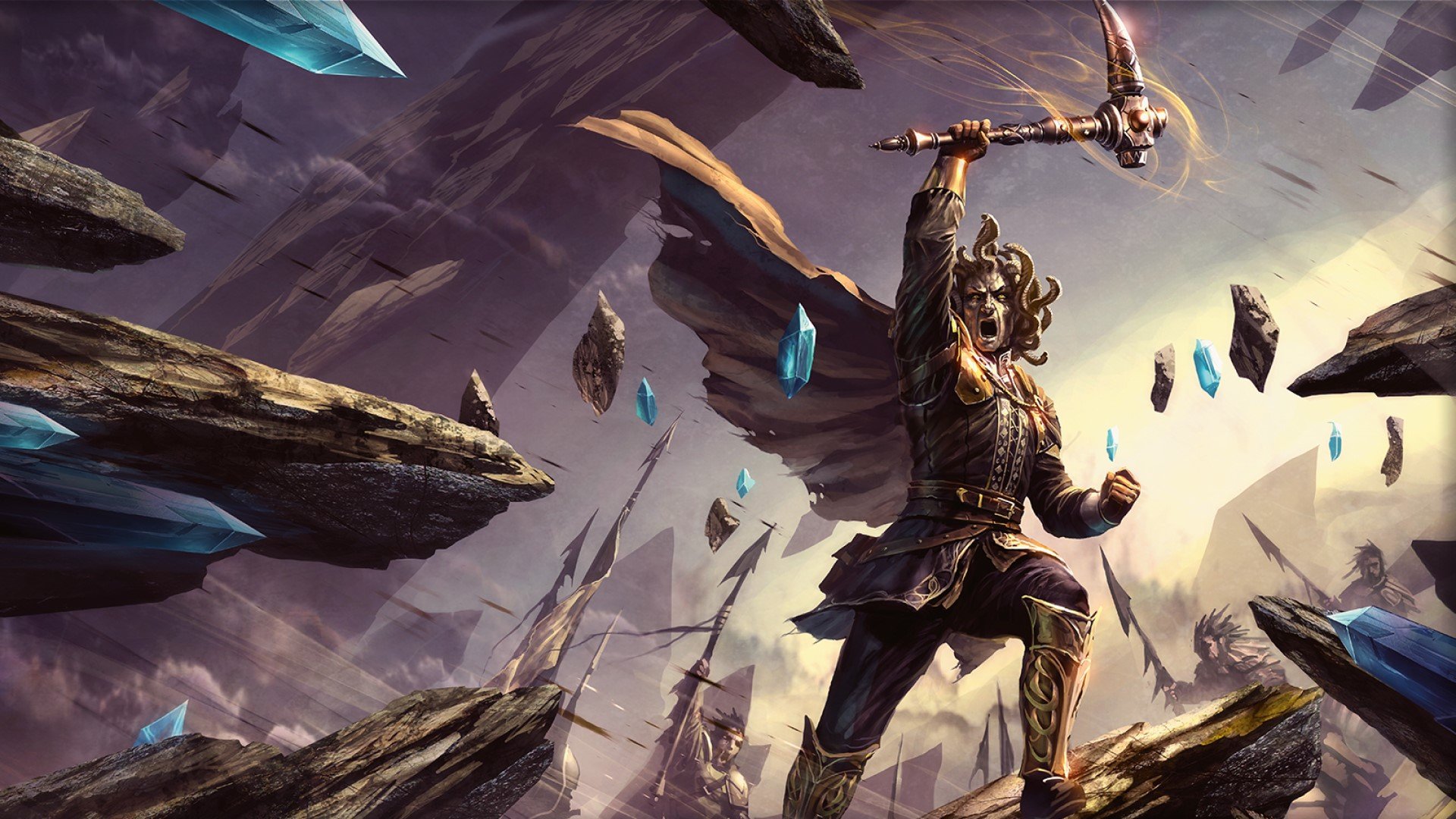
Brutal Critical 5e
Beginning at ninth level, you can roll one additional DnD weapon damage die when determining the extra damage for a critical hit with a melee attack.
This increases to two additional dice at 13th level and three additional dice at 17th level.
Relentless Rage 5e
Starting at 11th level, your rage can keep you fighting despite grievous wounds. If you drop to zero hit points while you’re raging and don’t die outright, you can make a DC 10 Constitution saving throw. If you succeed, you drop to one hit point instead.
Each time you use this feature after the first, the DC increases by five. When you finish a short or long rest, the DC resets to 10.
Persistent Rage 5e
Beginning at 15th level, your rage is so fierce that it ends early only if you fall unconscious or if you choose to end it.
Indomitable Might 5e
Beginning at 18th level, if your total for a Strength check is less than your Strength score, you can use that score in place of the total.
Primal Champion 5e
At 20th level, you embody the power of the wilds. Your Strength and Constitution scores increase by four. Your maximum for those scores is now 24.
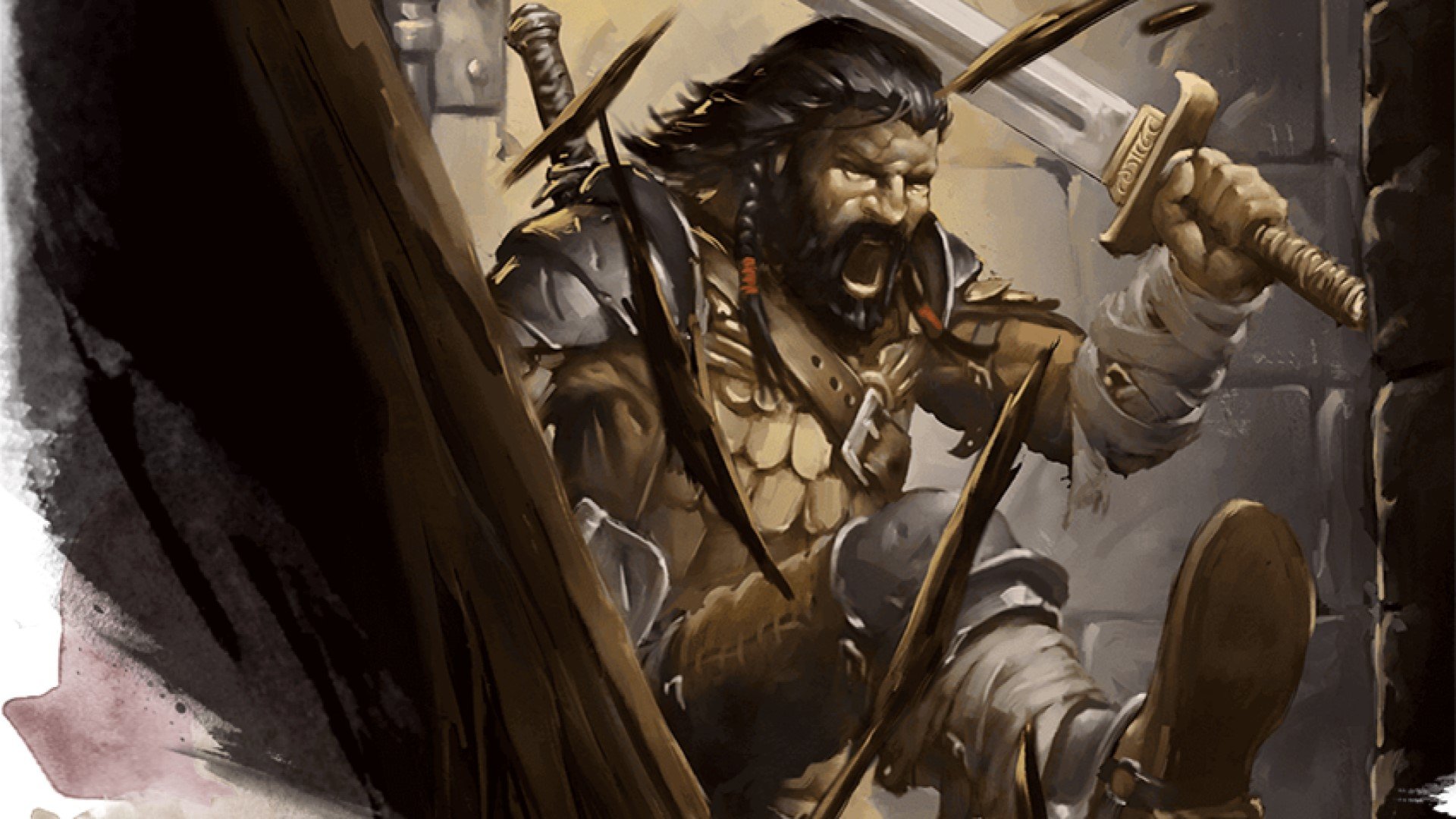
Best Barbarian 5e stats
The primary ability score for all Barbarians is Strength. This is the key stat for wielding the biggest melee weapons, like the Barbarian’s iconic Greataxe. Plus, the class feature Rage (at first level) and Reckless Attack (at second) provide extra bonuses to Strength-based melee weapon attacks.
Constitution is the next most useful Barbarian ability score. A Barbarian with only a shield (or less) for armor can add their Constitution modifier to their armor class, thanks to the Unarmored Defense class feature. Your would-be Conan can go to war in just a loincloth and sandals – but the extra hit points from a high Constitution modifier are very welcome.
Then, from level 11, whenever a Raging Barbarian would drop to zero hit points, they can use the Relentless Rage feature. If they pass a Constitution saving throw, they will stay standing on one HP, bloodied but still swinging.
High Dexterity is also important, but it comes third in the order of priority. It increases armor class and synergizes with another defensive ability, the Danger Sense class feature. This grants advantage to a Barbarian’s Dexterity saving throws against traps, spells and other hazards, as they nimbly dodge out of harm’s way.
Wisdom isn’t essential for Barbarians, but having a half-decent score comes with some perks. It supports many of your suggested proficiencies – Animal Handling, Perception, and Survival. Plus, it protects you from Wisdom saving throws, the preferred offensive of many magical DnD monsters.
Charisma comes next. It can be fun to build a charismatic Barbarian that leans hard on their Intimidation proficiency, but other than this, you won’t use the skill often. Similarly, Intelligence is a guaranteed dump stat. The only thing you need to use your head for is headbutts.

Best Barbarian 5e races
Races that increase Strength and Constitution scores are well suited to such a brutal adventuring style, but don’t overlook races with unique defensive abilities. Also bear in mind that, thanks to Tasha’s Cauldron of Everything and that book’s Custom Origins rules, any race could get an instant ability score increase to the Barbarian’s key stats during character creation. This opens up a lot more build options.
Barbarian Half-orc
A Barbarian Half-orc is the classic choice for good reason. +2 Strength and +1 Constitution are a promising start, and Darkvision and proficiency in Intimidation emphasize that this isn’t a Barbarian you want to meet in a dark alley.
Once per long rest, Half-Orc 5e characters can use Relentless Endurance, which is extremely similar to the Relentless Rage class feature: when they would be knocked to zero HP, the Half-Orc remains standing on one HP. The Savage Attacks ability rewards them for taking the iconic Greataxe, granting an additional weapon die in damage whenever they score a critical hit.
The Orcish Fury racial feat from Xanathar’s Guide to Everything lets them add this die to a normal hit, once per short rest, as well as granting +1 Strength or Constitution and the ability to make an attack as a reaction when they trigger Relentless Endurance. The Half-Orc Barbarian is a whirling dervish of fury that is extremely hard to put down.
Tortle Barbarian
With claws that provide a 1d6 natural weapon attack, proficiency in skills like Survival, and the ability to hold their breath underwater for an hour, members of the Tortle 5e race feel at home in the wilderness life of a Barbarian.
But it’s all about that shell: Tortles have Natural Armor that provides an AC of 17 and can be combined with a shield. Tortle Barbarians can safely ignore their Dexterity, as they don’t need it for their Armor Class at all, and focus on pushing their Strength score up to 20 as soon as possible.
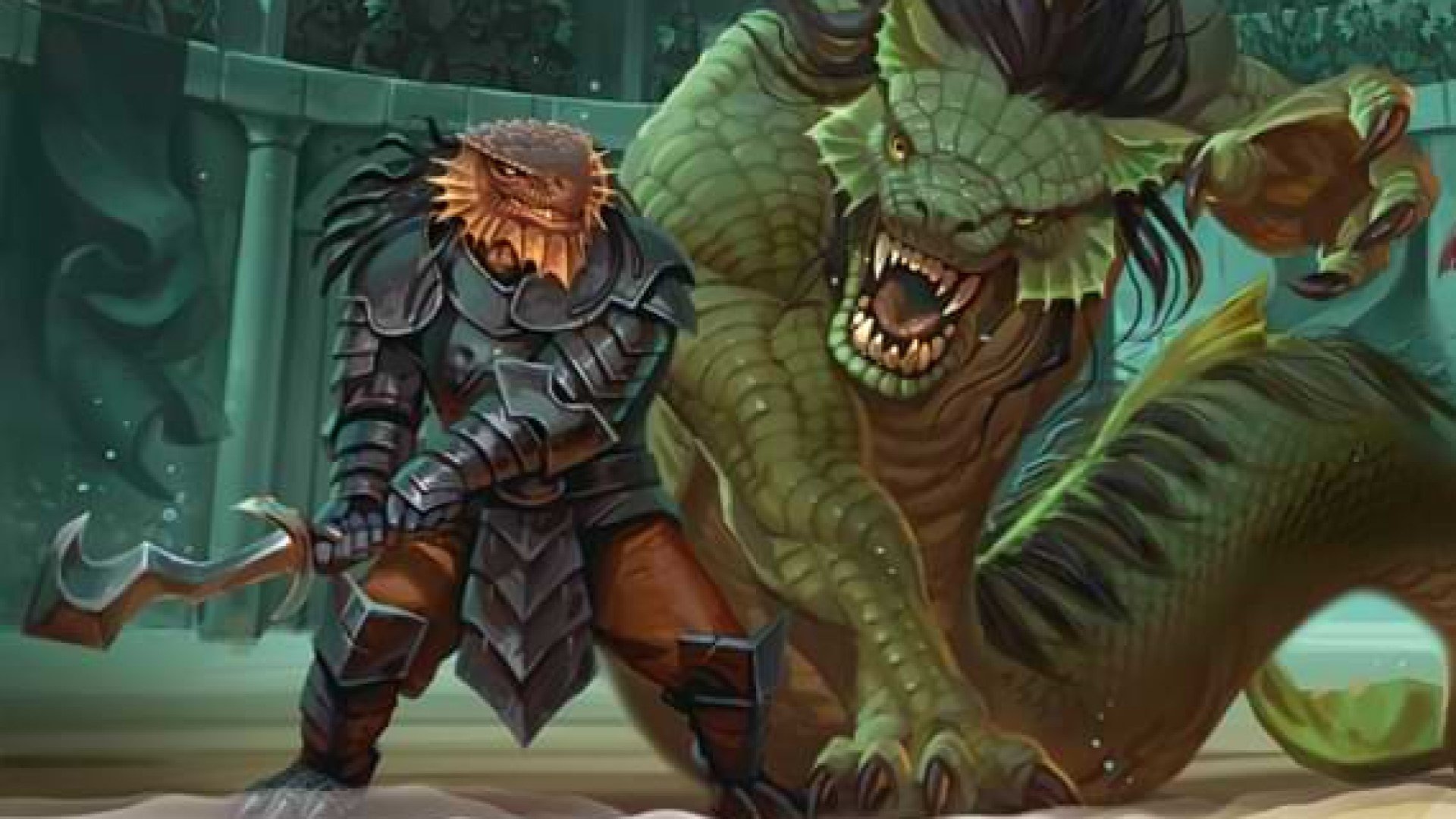
Barbarian Dragonborn
With +2 Strength and +1 Charisma, Barbarian Dragonborns are both inspiring and intimidating. Their Draconic Ancestry provides them resistance to an elemental energy type, a welcome defensive buff to this unarmored warrior.
Once per short rest, a Dragonborn 5e character can unleash a breath weapon attack, attuned to their Draconic Ancestry, against all enemies in an area: a bolt of lightning, a cone of flame, a cloud of poison, and so on. Enemies can halve the damage they suffer by succeeding on a saving throw (either Dexterity or Constitution), against a DC of 8 + the Barbarian’s Constitution modifier + proficiency bonus. It’s a great way to get more value from your already considerable Constitution score.
Leonin Barbarian
Similar to Dragonborn, Leonin Barbarians have a once-per-short-rest trick hidden behind their sharp grins. Daunting Roar affects enemies within 10 feet: they must pass a Wisdom saving throw (with a DC based on the Leonin 5e race’s Constitution modifier) or be frightened until the end of the Leonin’s next turn. Darkvision, Claws, and proficiency in Athletics, Intimidation, Perception, or Survival are all useful, too.

Goliath Barbarian
A naturally resilient race that dwells in frozen mountaintops, Goliaths have resistance to Cold damage thanks to their Mountain Born trait. Once per short rest, Goliath 5e characters can use their reaction to shrug off damage from an enemy attack, reducing it by d12 + their Constitution modifier. There’s nothing clever or tricky about a Goliath Barbarian; they just work.
Warforged Barbarian
If you’re committed to creating a defensive build that can pull enemy aggression away from their allies or launch Reckless Attacks with impunity, look no further than the Warforged Barbarian, which uses a race introduced in 2019’s Eberron: Rising from the Last War.
Warforged 5e characters have +2 to Constitution and +1 to one other score of their choice. Constructed Resilience grants advantage on saves against poisoning and resistance to poison damage, and makes them immune to magical Sleep effects. Warforged don’t actually sleep at all: they remain conscious (though motionless) while they take a long rest, forever resolving the question of who is going to take first watch.
They have a suite of other non-combat resistances: Warforged don’t need to eat, breathe, and can’t suffer disease, making them hardy wilderness adventurers.
Last, their shiny metal body grants them +1AC. A first-level Warforged Barbarian devoted entirely to taking the hits can combine this with Unarmored Defense and a high Dexterity and Constitution score, a shield, and reach an impressive AC of 19. And, unlike a Tortle, that AC will climb higher when they increase their Constitution or Dexterity.

Best Barbarian 5e equipment
The best way to stay safe in a fight is to end all of your enemies as quickly as possible, and there’s no better tool for slaughter than a massive, two-handed melee weapon. While the default equipment list for a Barbarian lists a Greataxe, they can start with any martial melee weapon, including the noble Greatsword. But which is superior?
Statistically, it’s the Greatsword. Rolling 2d6 rather than 1d12 damage, the Greatsword produces a reliable damage bell curve that peaks around the number seven, and shies away from the extremes of one and 12 – and the average damage is very slightly higher, too.
But you didn’t roll up a Barbarian to let statistics tell you what to do. You’re creating a Barbarian because you want to hit stuff hard and roll big dice, and there’s no damage die bigger than the d12.
When you gain the Brutal Criticals feature at level nine, every time you score a critical hit you can roll an additional weapon damage dice. If you have chosen the majestic Greataxe as your weapon, that will be a second, commanding d12.

The other aggressive option for a Barbarian is to take paired melee weapons, particularly a pair of trusty Handaxes. These deal just 1d6 damage, but, as they’re light weapons, you can make an additional attack with the second axe as a bonus action after attacking with the first (note that this off-hand attack doesn’t apply your Strength modifier to damage.)
In a pinch, one or both handaxes can be used as thrown weapons, sustaining your Rage on a turn that your foes are outside smashing range – or take the Dual Wielder feat for +1AC, and upgrade to a pair of d8 damage Battle Axes.
Some Barbarian DnD character builds, particularly the Path of the Ancestral Guardian, provide protection for their allies, usually by pulling enemy aggression onto themselves. Barbarians know how to use a shield, even if it isn’t listed as starting equipment for them. If you want a Barbarian who can take anything that’s thrown at them, consider a Warforged or Tortle, equipped with a shield and a grudge.

Barbarian 5e subclasses
The Barbarian 5e subclasses are as follows:
- Path of the Ancestral Guardian
- Path of the Battlerager
- Path of the Beast
- Path of the Berserker
- Path of the Giant
- Path of the Storm Herald
- Path of the Totem Warrior
- Path of the Zealot
- Path of Wild Magic
Path of the Ancestral Guardian
| Level | Features |
| 3 | Ancestral Protectors |
| 6 | Spirit Shield (2d6) |
| 10 | Consult the Spirits, Spirit Shield (3d6) |
| 14 | Vengeful Ancestors, Spirit Shield (4d6) |
Found in: Xanathar’s Guide to Everything
When those on the Path of the Ancestral Guardian rage, they draw forth the spirits of their ancestors to aid their allies and confound their foes. The Ancestral Protectors ability gives the first creature the Barbarian strikes each turn disadvantage on attack rolls against targets other than the Barbarian on its next turn, and grants allies resistance against that enemy’s attacks.
Spirit Shield is a reaction that the Barbarian can use each turn while Raging, reducing the damage an ally within 30 feet would suffer from an enemy attack by 2d6 (or more at higher levels). Then, when they hit level 14, the Vengeful Ancestors ability turns that damage reduction into Force damage on the attacking enemy.
Their protective aura and the ability to cast some Divination spells with Consult the Spirits give the Ancestral Guardian a secondary role as a support class, though they’re still tied to the front line of the battle. The damage reduction from Spirit Shield can help friendly spellcasters maintain their concentration when hit, while tying up the attention of a deadly foe with Ancestral Protectors will allow a fragile Rogue to stay engaged and keep landing their vital Sneak Attack damage.

Path of the Battlerager
| Level | Features |
| 3 | Battlerager Armor |
| 6 | Reckless Abandon |
| 10 | Battlerager Charge |
| 14 | Spiked Retribution |
Found in: Sword Coast Adventurer’s Guide
Barbarians on the Path of the Battlerager are Dwarves who woke up and chose violence. Originating in the Forgotten Realms setting of Faerûn, only Dwarves can follow the path of the Battlerager. Their abilities are tied to a suit of unique, spiked-covered medium armor with AC14.
While Raging, they can use a bonus attack action to smash into their foes, dealing d4 piercing damage. If they make an attack to grapple an enemy (remember, that’s a Strength check, which Raging Barbarians have advantage on) they inflict three piercing damage on their foe. Later, they can also use that bonus action to Dash while they’re Raging.
The Battlerager is something of a masochist. The Reckless Attacks feature leaves Barbarians vulnerable to taking hits, but Battleragers are encouraged to use it often by their ability Reckless Abandon, which grants them a few temporary hit points every time they make a Reckless Attack. Then Spiked Retribution adds a little payback, inflicting three points of piercing damage on anyone who lands a hit on them.
The Magekiller and Mobile 5e feats allow you to create a pitbull of a Battlerager that can punch their way through the enemy battleline, grab onto an enemy spellcaster, and hold on until they’re dead.

Path of the Beast
| Level | Features |
| 3 | Form of the Beast |
| 6 | Bestial Soul |
| 10 | Infectious Fury |
| 14 | Call of the Hunt |
Found in: Tasha’s Cauldron of Everything
The Path of the Beast turns your Barbarian into a weird semi-shapeshifter, physically manifesting their inner monster whenever they Rage. At levels three and six, this provides them with a toolbox of flexible, transformation powers.
Form of the Beast allows them to manifest a plethora of natural weapons when Raging, with the Tail the most useful in all situations; it’s a reach weapon that allows the Beast to attempt to deflect enemy attacks with their reaction. Bestial Soul makes those natural weapon attacks magical and adds further mutations that you can swap between at each short rest, providing perfect adaptation for climbing, jumping, or swimming.
Infectious Fury buffs your natural weapons even further, allowing you to deal psychic damage or force your target to attack another hostile.
Make it to level 14, and Call the Hunt will mark the Beast out as a true alpha in the pack. While Raging, the Beast picks a number of willing allies up to the Beast’s Constitution modifier. The Beast gains five temporary HP for each such ally, and, for the duration of the Rage, those allies can add d6 to one damage roll each turn.
The Path of the Beast is flexible where other Barbarian paths are focused. Follow it if you want to play a Barbarian that is truly wild.

Path of the Berserker
| Level | Features |
| 3 | Frenzy |
| 6 | Mindless Rage |
| 10 | Intimidating Presence |
| 14 | Retaliation |
Found in: Player’s Handbook
The Path of the Berserker is perhaps the iconic Barbarian, equal parts psychopath and industrial wood-chipper. While other Barbarians merely Rage out, the Berserker can throw themselves into a Frenzy, granting them a melee weapon attack each turn as a bonus action.
The price of Frenzying is high: Berserkers gain a level of exhaustion 5e each time they finish a Frenzy. This rare status condition applies progressive debuffs as a character becomes more and more exhausted. One level of exhaustion inflicts disadvantage on all skill checks; six levels of exhaustion are enough to kill a character. A long rest and adequate meal remove just a single level of exhaustion.
Mindless Rage provides immunity to Charm and Frighten effects while raging, and Retaliation allows the Berserker to make an attack in reaction to being injured by an adjacent foe. Neither of these relies on Frenzy, and both are welcome buffs.
Intimidating Presence is an underwhelming ability: the Berserker sacrifices their normal action to attempt to inflict the Frightened condition on a single enemy. The enemy gets a Wisdom save, and the DC is eight + the Berserker’s proficiency bonus + their Charisma modifier, giving most enemies at least a 50/50 chance to avoid the effect.
The Berserker is not the choice if you want to maximize your damage output in a combat campaign; their signature ability has a truly exorbitant downside, and Intimidating Presence is rarely an effective way to use an action.
But, if you’re playing a campaign with fewer battles, a heavy roleplaying focus, perhaps employing a liberal use of exhaustion to represent the strain of wilderness survival, or the variant, slower healing rules from the Dungeon Master’s Guide, the Berserker is an incredibly thematic choice, a terrifying warrior whose violent outbursts threaten their own life as well as their enemies.

Path of the Giant
| Level | Features |
| 3 | Giant’s Power, Giant’s Havoc |
| 6 | Elemental Cleaver |
| 10 | Mighty Impel |
| 14 | Demiurgic Colossus |
Found in: Bigby Presents: Glory of the Giants
The newest Barbarian subclass is the Path of the Giant, which gives your raging brawler powers inspired by the classic monster. In short, this is a subclass that turns you into both Thor and Loki from the Marvel Cinematic Universe.
At third level, Giant’s Power gives you the ability to speak the Giant 5e language, as well as cast the Druidcraft or Thaumaturgy DnD cantrips. Wisdom is your spellcasting ability here, but we don’t recommend taking it on as another priority ability score – you’ve got enough on your plate buffing Strength, Constitution, and possibly Dexterity. A low Wisdom score isn’t going to hurt these minor spells.
You’ll also get Giant’s Havoc at level three, an ability that activates when you Rage. This increases your reach by five feet and makes you Large on the DnD sizes scale. Plus, it lets you add your Rage Damage bonus to a successful thrown weapon attack.
So, we’ve got spellcasting and a Giant’s size for Loki. You’ll fully become Thor at level six, when you get Elemental Cleaver. This allows you to choose a weapon and imbue it with one elemental damage type (we suggest lightning for the theme). That weapon gets the thrown property and deals an extra 1d6 damage of your chosen element – oh, and once you throw it, it reappears in your hand.
Things get even more out of hand at level ten when Mighty Impel allows you to throw creatures of Medium size or smaller. The creature takes fall damage and ends up prone after.
Finally, Demiurgic Colossus makes you even more enormous. When Raging, you grow to Large or Huge size, your Elemental Cleaver damage increases to 2d6 and you can toss even bigger creatures with Mighty Impel. This is a Barbarian with a simple mantra – get large and throw hard.

Path of the Storm Herald
| Level | Features |
| 3 | Storm Aura |
| 6 | Storm Soul |
| 10 | Shielding Storm |
| 14 | Raging Storm |
Found in: Xanathar’s Guide to Everything
Swathed in the fury of the elements, when those on the Path of the Storm Herald Rage, nature’s wrath accompanies them. The Herald attunes to the Sea, Desert or Tundra, channeling their power when they Rage into their Storm Aura.
This has a one-time effect when they start Raging, that they can trigger again with a bonus action (so take note – the Storm Herald is not going to be a dual-wielding Barbarian). The Desert Storm Aura inflicts fire damage indiscriminately on all caught in the aura; the Tundra provides temporary hit points to allies; and the Sea can direct a lightning strike against a single foe.
Storm Soul provides damage resistance against the appropriate element type, even when not Raging, and comes with a utility feature (such as a swimming speed and the ability to breathe underwater for a Storm Herald of the Sea), while Shielding Storm extends that damage resistance to selected creatures within their aura.
The Raging Storm is another powerful combat effect: anyone who hits the Desert Storm Herald suffers retaliatory fire damage, while the Sea Storm Herald can knock down enemies with the force of a wave, and the Tundra Storm Herald can lock enemies in place within their freezing aura.
You’ll get the most mileage out of these elemental abilities if your campaign takes you into frost-giant haunted mountain peaks or a dragon’s volcanic lair – but you’ll have the most fun with it if you really enjoy special effects and Led Zeppelin’s The Immigrant Song.

Path of the Totem Warrior
| Level | Features |
| 3 | Spirit Seeker, Totem Spirit |
| 6 | Aspect of the Beast |
| 10 | Spirit Walker |
| 14 | Totemic Attunement |
Found in: Player’s Handbook, expanded in the Sword Coast Adventurer’s Guide.
The Path of the Totem Warrior Barbarian is a primal protector attuned to the spirits of nature. If you want a Barbarian who tempers their Strength with Wisdom, this is a great choice. Their Spirit Seeker and Spirit Walker abilities grant them Druidic spells that they can perform as rituals, communing with the spirits of animals and the wild itself, which will be most useful in a campaign with lots of wilderness exploring.
The Totem Spirit, Aspect of the Beast, and Totemic Attunement abilities are each themed to a particular Totem Animal, of which Aspect of the Beast is a utility ability and the others combat powers.
The Bear is strong and hardy, perfect for a Barbarian who wants to draw in enemy punishment. The Eagle is hard to pin down, with keen senses and short bursts of flight when they reach level 14.
The Elk is swift and unstoppable, having a fantastic utility ability of doubling the travelling speed of a party of 10, and a handy ability to charge through enemy spaces at level 14. The Tiger, weirdly, is just really good at jumping, and the Wolf is an alpha predator, granting allies advantage on attack rolls against adjacent enemies (making them the Rogue’s best friend). You’re not limited to picking one Totem animal and can select different Totems at different levels.

Path of the Zealot
| Level | Features |
| 3 | Divine Fury, Warrior of the Gods |
| 6 | Fanatical Focus |
| 10 | Zealous Presence |
| 14 | Rage Beyond Death |
Found in: Xanathar’s Guide to Everything
The Path of the Zealot is a raging dervish, driven by divine fury. Compared to the Zealot, DnD Paladins and 5e Clerics look like timid pamphleteers. Divine Fury adds radiant damage to the Zealot’s first hit with a weapon attack each turn, while Warrior of the Gods means they can be magically returned to life without expending any material components. Think of that as a ‘frequent flier’s discount’ for return trips from the afterlife.
Fanatical Focus is like an angrier version of the Paladin’s Aura of Protection: once per Rage, the Zealot can reroll a failed saving throw. Zealous Presence is a potent bonus action available once per long rest, granting up to 10 allies advantage on attack rolls and saving throws until your next turn.
Remember: mercenaries can be hired from 2GP per day, so there’s never an excuse to affect less than 10 characters with this. And Rage Beyond Death is the pinnacle of pure, stubborn aggression: while Raging, the Zealot simply will not die.
If you like the idea of a Holy Warrior, but always thought that the Paladin was too much of a goody-two-shoes compared to actual crusaders, consider the Zealot.

Path of Wild Magic
| Level | Features |
| 3 | Magic Awareness, Wild Surge |
| 6 | Bolstering Magic |
| 10 | Unstable Backlash |
| 14 | Controlled Surge |
Found in: Tasha’s Cauldron of Everything
If you think that all the other Barbarian Paths are too reserved and sensible, you want the Path of Wild Magic Barbarian.
There are a couple of sensible abilities for this class: Magic Awareness provides an intuitive awareness of the presence of magic, while Bolstering Magic can restore low-level spell slots to spellcasters, or grant characters a bonus d3 to their attacks and ability checks.
The real chaos starts when the Wild Magic Barbarian enters a Rage. Thanks to Wild Surge, you’ll roll on the Wild Magic table and gain a random benefit for the duration of the Rage. That could be the ability to summon exploding pixies next to their enemy, unleash a blinding beam of radiant energy from their chest, teleport 30 feet, or all sorts of other chaos.
Unstable Backlash lets the Barbarian roll again on the table when they suffer damage or fail a saving throw, immediately unleashing the effect and applying the new one for the duration of the combat. Controlled Surge is almost an anticlimax, allowing you to roll two dice on the Wild Magic table and choose the result you prefer.
There’s no way to optimize a Wild Magic Barbarian. That will frustrate the min-maxer at the table – but you’ll be laughing too hard to care.

Best Barbarian 5e builds
How much flexibility is there in a melee class that specializes in hitting things and being angry? The Barbarian will always be a melee beat-stick – but you get to choose whether that stick will be full of nails, on fire, or simply especially big. Read on for our favorite character builds for Barbarians.
A note before we begin: you can roll up your DnD stats any way you like (see our guide for more details). For simplicity’s sake, we’ve used the Standard Array method for these builds.
Half-Orc Berserker d12 addict
This build cares about one thing and one thing only: rolling d12s.
Is it more effective than other Barbarians? Debatable. Do the side-effects of Frenzy risk killing your Barbarian from sheer Exhaustion? Absolutely. Does the build roll more delicious d12s than any other character in the game? Probably not; Fighters can take Greataxes too, and they pick up more Extra Attacks than the Barbarian. But you will still roll a lot of d12s.
Starting stats
| Strength | 15 |
| Dexterity | 13 |
| Constitution | 14 |
| Intelligence | 8 |
| Wisdom | 12 |
| Charisma | 10 |
Race
Pick a Half-Orc for the excellent ability score boosts and Savage Attacks ability, which grants an extra weapon die in damage when you land a critical hit with a melee weapon.
Background
Half-Orcs are already proficient in Intimidation, so we suggest going for the Outlander DnD background. This buffs your Athletics (essential) and Survival (nice to have).
Equipment
Maximize your Strength and Constitution scores, pick up your Greataxe and walk out the door.

Subclass
At level three, specialize in the Path of the Berserker. Though the Frenzy class feature comes with the fiendish downside of causing you a level of exhaustion, it also lets you make a single melee attack each turn as a bonus action while you are Raging.
More attacks mean more hits; more hits mean more d12s in damage. You can always pick up a tureen of Olisuba Leaf, a tea that lets you clear two levels of exhaustion after every long rest instead of just one, to Frenzy more often during each day of adventuring.
Feats
At level four, take the Orcish Fury feat. Once per short rest, you can roll an additional weapon die in damage when you hit with a simple or martial weapon (a greataxe d12, obviously), and you can make a free melee attack when you use your Relentless Endurance racial ability.
At level eight, the Great Weapon Master feat will allow you to make bonus attacks (as long as you aren’t in a Frenzy) whenever you land a critical hit or drop an enemy to 0 HP. It also lets you trade a -5 to hit penalty for +10 damage on an attack, perfect for damage sponge enemies – though, as that doesn’t add a d12, it’s really more of an afterthought.
Multiclassing
Take level nine in Barbarian to pick up Brutal Critical for yet more d12s when you score a critical hit – but, instead of taking your 10th level in Barbarian, begin DnD multiclassing and pick up the first level of Fighter. Choose the Great Weapon Fighting Style. This lets you reroll damage die rolls of 1 or 2. Rerolling a d12 is still rolling a d12! Second Wind also grants a welcome ability to regain a few HP.
Take another level in Fighter for Action Surge: this once-per-short-rest ability lets you take an additional action, which will of course be the Attack action, granting you two more Greataxe attacks.
Then take a third level in Fighter and the Champion martial archetype, allowing you to critically hit on rolls of 19 and 20, doubling the number of criticals you score. Your stats may be low, but your d12 output is reassuringly high.

Stout Halfling unmounted lancer
As a Small race, DnD Halflings have disadvantage when fighting with heavy weapons, capping their maximum damage die at a puny d10 (a versatile weapon wielded two-handed).
But there is a truly stupid exception – although clearly intended for mounted combatants, the Lance can be used on foot as a two-handed, reach weapon that deals d12 damage. Sure, it grants disadvantage on attacks against enemies adjacent to you. But that shouldn’t be a problem for this build…
Starting stats
| Strength | 13 |
| Dexterity | 14 |
| Constitution | 15 |
| Intelligence | 8 |
| Wisdom | 10 |
| Charisma | 12 |
Race
Pick a Stout Halfling for +2 Dexterity, +1 Constitution, the handy Lucky feature that allows you to reroll attack, ability and saving throw rolls of one, Halfling Nimbleness, which allows you to move through the space of creatures larger than you, and Stout Resilience, which grants advantage on Poison Saves and Resistance to poison damage.
Thanks to your starting ability scores and the Halfling’s stat increases, you’ll have a respectable AC 16 – which you’re going to need, because you’re going to get into trouble.
Background
A background that gives you Dex-based proficiencies is useful – in particular, we’re looking for Acrobatics, as it gives you that extra bit of agility. Our favorite background for this build is the Gladiator variant of Entertainer. As a lance-wielding Haflling, you’re already a bit of an oddity – so why not make some coin out of it?
Equipment
Swap your Greataxe for a Lance (and don’t ask how your three-foot-tall Halfling is carrying a ten-foot-long lance).
For a more sensible, far more boring version of this build, drop the lance in favor of a shield and any old one-handed martial melee weapon, or a pair of Battleaxes. But remember: anyone can make good decisions. Only true heroes go into a dungeon wielding a cavalry weapon three times their size.

Subclass
At third level, follow the Path of the Totem Warrior, taking the Eagle totem to grant enemies disadvantage on opportunity attacks against you. Your objective? Run full pelt at your adversaries, prong them with the lance, and dash through their legs.
It’s up to you which Aspect of the Beast you pick at level six on the Path of the Totem Warrior, but, at level 14, take Totemic Attunement with the Tiger. This allows you to make an additional melee attack as a bonus action if you move twenty feet or more in a straight line before you attack your target, which you should always be able to do.
Feats
At level four, there are two feats that increase your speed and maneuverability. The Squat Nimbleness racial feat is available to any Small character and grants +1 Strength or Dexterity, as well as providing +5 feet movement speed, proficiency in Acrobatics or Athletics, and advantage on checks to escape from DnD grapples.
Alternatively, Mobility provides +10 feet in movement, removes any difficult terrain penalties to your movement when Dashing, and prevents enemies that you have attacked from making opportunity attacks against you.
When you gain an Extra Attack and Fast Movement at Level five, your Barbarian will be able to poke one enemy with their lance, run through their legs without fear of reprisal, and prong the Wizard hiding behind them. Play catch-up with your Strength score for your level eight Ability Score increase, then buff either your Constitution or Strength at levels 12 and 16.

Teenage mutant Barbarian Tortle
Did we design this build because of the meme potential? Yes. But it turns out it’s lots of fun too. Tortles don’t ever need to wear armor.
By level six, Barbarians on the path of the Beast don’t need magical weapons to make magical attacks, can climb as if permanently affected by Spider Climb, and can breathe underwater. This frees up their three magic item attunement slots for all kinds of fun Magic Rings and Wondrous items – perfect if you’re the kind of player who wants to push all the buttons and play with all the toys.
Starting stats
| Strength | 15 |
| Dexterity | 13 |
| Constitution | 14 |
| Intelligence | 8 |
| Wisdom | 12 |
| Charisma | 10 |
Race
As a Tortle, you can walk out the door in your birthday suit: a hard shell that provides natural Armor Class of 17.
Background
The Soldier is a tried-and-tested background for Barbarians. There are no particular proficiencies propping up this build, so stick to the basics. Intimidation and Athletics are great all-rounder DnD skills.
Equipment
You don’t even need weapons, but you should probably pick up a Battleaxe and Shield. Starting with AC 19 and a weapon you can wield in one or two hands is a good starting position for your Barbarian.
As you don’t need to worry about weapons, deck yourself out in magic Rings, Amulets, Bracers, Circlets and other bling like a Barbarian Mr T. The ‘T’ stands for Tortle.

Subclass
The combat bonuses you gain when you pick the Path of the Beast can be changed every time you Rage, while the special movement abilities granted at level six can be swapped each short rest, so you’ll always remain flexible. There are still nuances to consider.
Manifesting a Tail can make the Tortle into a true tank: with a shield granting them AC 19 and a tail-parry reaction that lets them push that even higher when an attack does hit, this is a very tough Tortle to crack. Though the Beast’s paired Claws aren’t much more damaging than two-weapon fighting with paired hand-axes, attacking with both Claws doesn’t use up a bonus action.
What to do with that extra action slot? Why not chug a Potion of Fire Breathing and channel your inner Godzilla? The Beast’s Bite provides a trickle of healing once per turn if you are below half HP when you land the attack.
Feats
If you want to double down on defense, take the Shield Master feat at level four. This allows you to use a bonus action to make a Shove 5e attack with your shield, while greatly improving your survivability against effects that allow Dexterity saves: it adds +2 to such saves against effects that target only you, and when a successful Dexterity save would allow you to save to prevent half damage from an effect such as a dragon’s fire breath, you can prevent it all instead. This synergizes beautifully with Danger Sense.
If you’d prefer to embrace your inner scorpion and have a GM who smiles on players finding every little advantage in the rules… instead take the Dual Wielder feat at level four. The Sage Advice Compendium confirms that natural weapons are weapons, and the Dual Wielder feat allows you to make a bonus two-weapon attack with weapons that aren’t light weapons, granting you +1 AC.
As a clawed Tortle, this will be available even when you aren’t in Beast mode. From level five, when you manifest your Rage Claws, you’ll have a total of four attacks per turn: one normal, one from the Claws’ ability, one from your extra attack, and one as a bonus action.
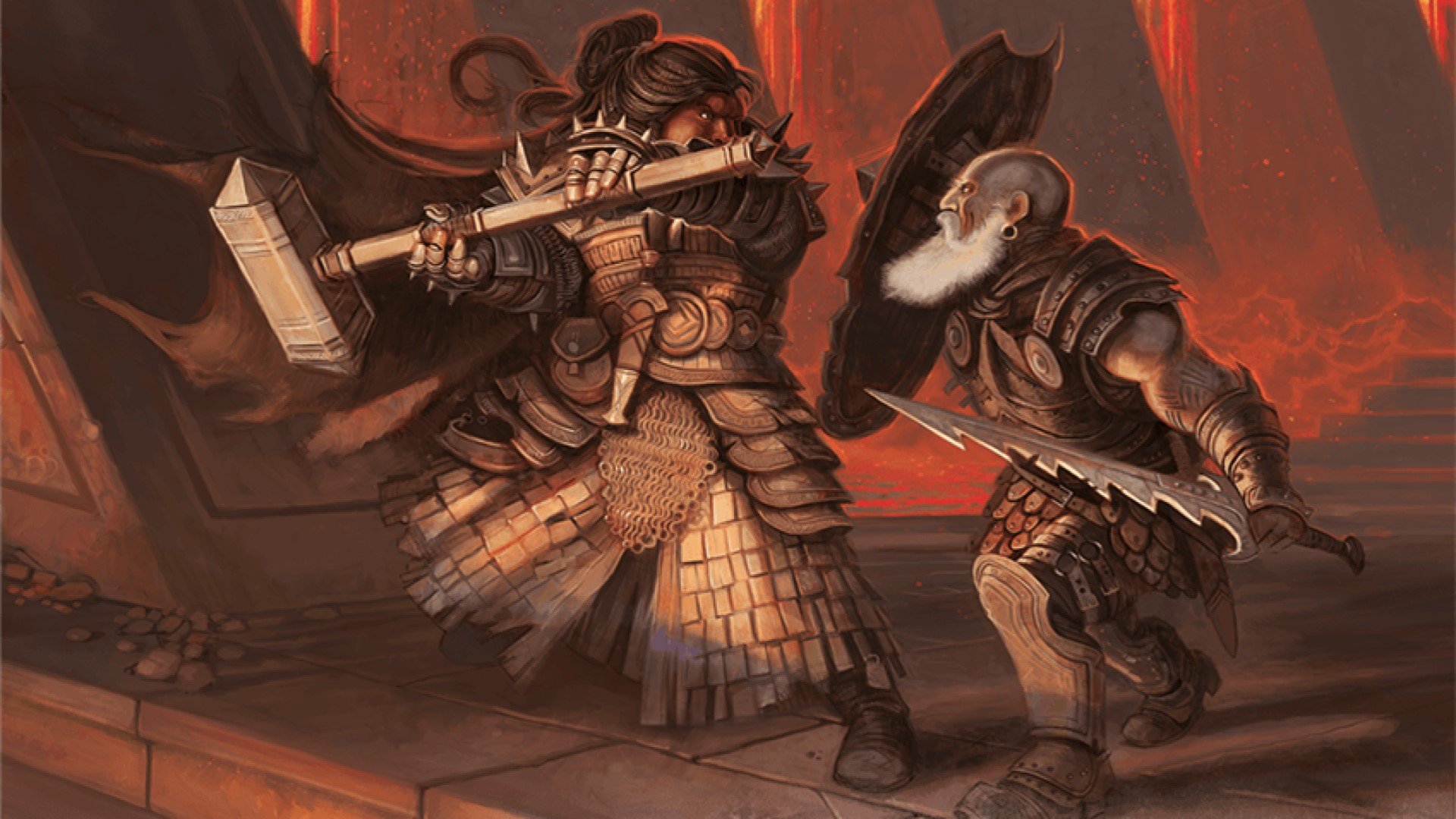
Duergar Battlerager Luchador
This angry, spiky DnD Dwarf goes into battle empty-handed. But unarmed doesn’t mean unarmored: they’re a spiky pincushion of unbridled aggression.
Starting stats
| Strength | 15 |
| Dexterity | 14 |
| Constitution | 13 |
| Intelligence | 8 |
| Wisdom | 12 |
| Charisma | 10 |
Race
Take the Hill Dwarf subrace to gain +2 Constitution and +2 Strength.
Background
Athletics is a must-have for this build, so the Soldier background makes the most sense. However, you could choose this as one of your class proficiencies and take the Gladiator version of the Entertainer background. It fits the flavor of this ‘luchador’ build a little better.
Equipment
Your signature spiked armor is the most important piece of equipment for this build. You’ll fight with a Battleaxe in one hand and a shield in the other, bashing your foes with your spikes as a bonus action. Though the damage die on the armor spikes is just a d4, you get to add your Strength modifier to the result, making your armor spikes more damaging than merely wielding a handaxe in your offhand.
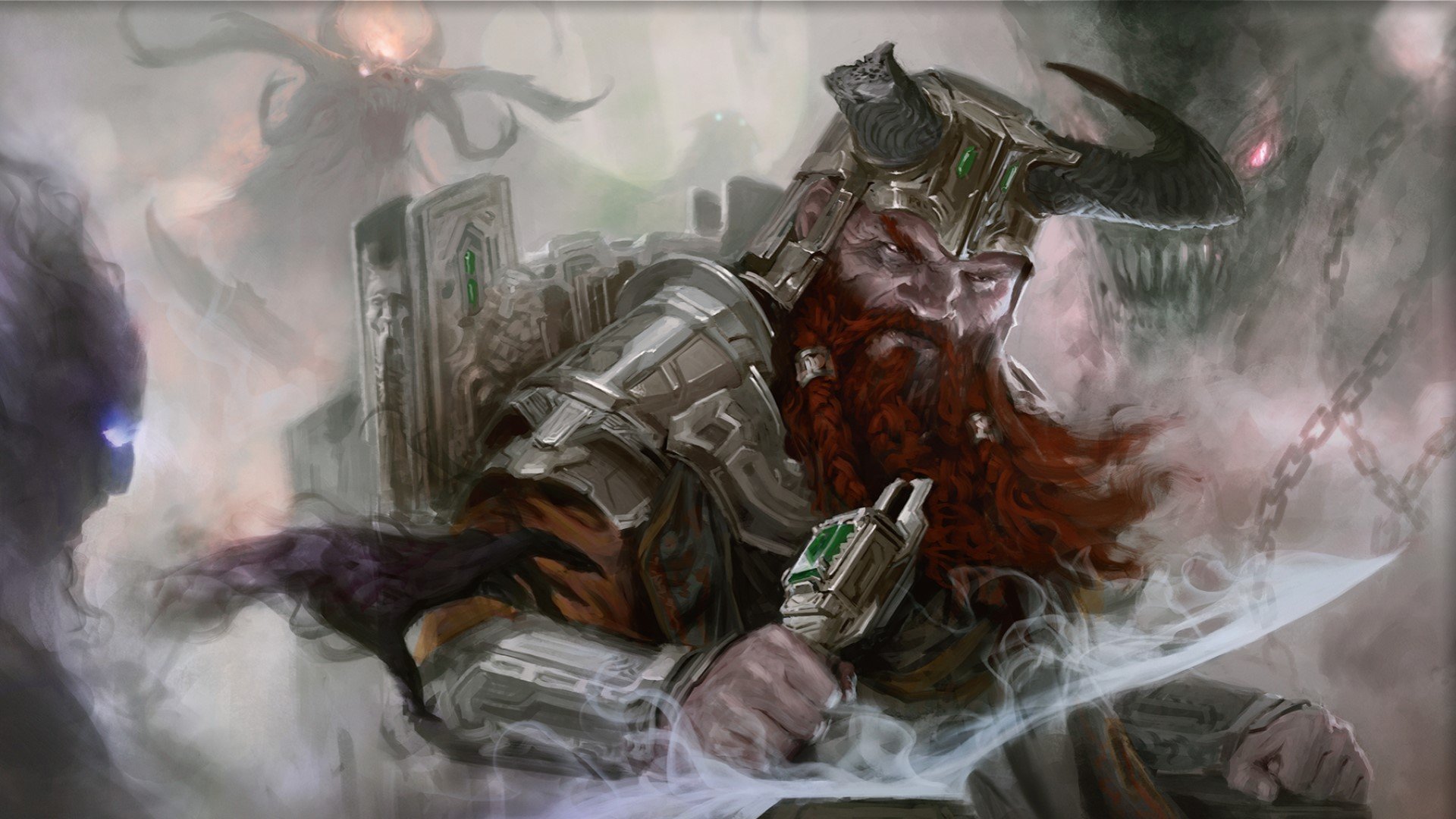
Subclass
At level three, you’ll begin to follow the Path of the Battlerager, the Kuldjargh, or ‘Axe-Idiot’ in Dwarvish.
Feats
While the sensible way to follow this Primal Path would be to fight with axe, shield, and spike attacks, you’re going to do something different. At level four, take the Fighting Initiate Feat, and choose the Unarmed Fighting style. This style upgrades your Unarmed Strikes to deal d8 damage – provided you aren’t holding any weapons or a shield when you make the attack – and allows you to deal d4 damage to a creature that you’re grappling at the start of your turn.
At level five, you’ll gain an Extra Attack. You are now a living bear trap.
Charge your foes, grapple them with one hand (dealing 3 damage if you’re successful), punch them for d8 damage with the other fist, and then use a bonus action to stab them with your armor spikes. Proceed to headbutt your grappled foe into the grave, dealing d4 damage at the start of each of your following turns before you start punching and spiking them. If you’re lucky, they’ll try and escape – a great way to waste their action, as your Raging Barbarian has advantage on Strength checks.
Looking for even more tabletop RPG info? Here are the DnD books coming up on this year’s DnD release schedule.
This guide directly presents rules text for the DnD 5e Barbarian class, published by Wizards of the Coast under a Creative Commons Attribution 4.0 license.
